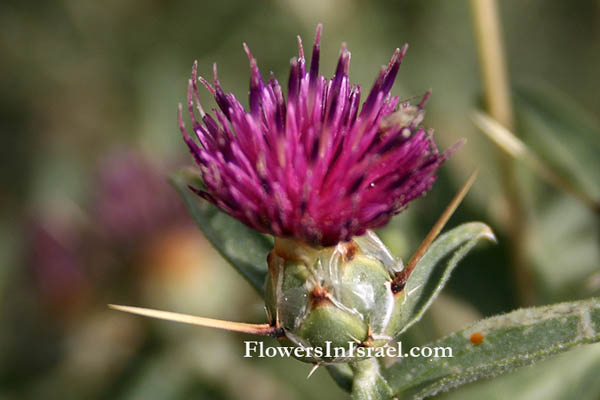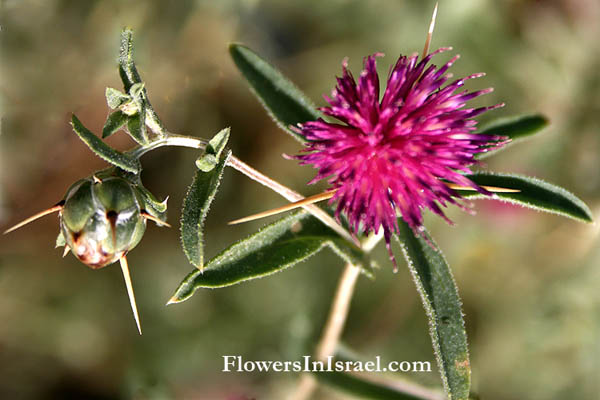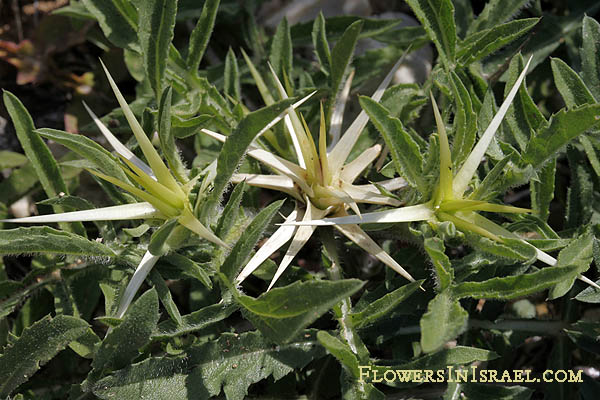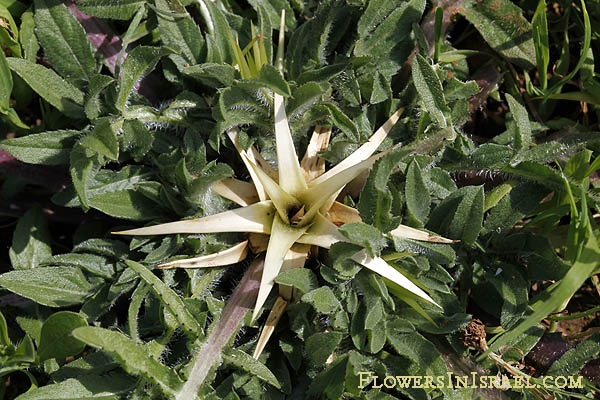Hebrew: דרדר מצוי, Arabic: القنطريون الأيبيري
| Scientific name: | Centaurea iberica Trevis et Sprengel | |
| Common name: | Iberian knapweed, Spanish Centaury-thistle | |
| Hebrew name: | דרדר מצוי | |
| Arabic name: | القنطريون الأيبيري | |
| Plant Family: | Compositae / Asteraceae, מורכבים |

|
| Life form: | Annual | |
| Spinescence: | Bracts | |
| Stems: | 30-180 in height, much branched, rounded mound, puberulent to loosely tomentose | |
| Leaves: | Alternate, rosette, dissected once | |
| Flowers: | Heads disciform, many florets, cream, purple; straw-colored spine-like bracts over 2.5 cm in length | |
| Fruits / pods: | Cypselae white- or brown-streaked, 3–4 mm, glabrous; pappi of white bristles | |
| Flowering Period: | April, May, June, July | |
| Habitat: | Light soils | |
| Distribution: | Mediterranean Woodlands and Shrublands, Semi-steppe shrublands, Shrub-steppes, Montane vegetation of Mt. Hermon | |
| Chorotype: | Med - Irano-Turanian | |
| Summer shedding: | Ephemeral |

Derivation of the botanical name: Centaurea, gets its name from the centaur, Chiron, who is said in mythology to have taught us the healing power of herbs. iberica, of Iberia, i.e., Spain and Portugal. The Hebrew name: דרדר, dardar, from Aramaic: דרדרא, dardara; Arabic: דרדאר, darda'ar. (Gen. 3:18, Hos. 10:8). In modern Arabic shauket el-dardar is applied to the star thistles or knapweeds.
The Hebrew dardar, דרדר is a species of the star thistle, perhaps the Centaurea iberica. Centaurea iberica is one of the commonest weeds of the eastern Mediterranean (Centaurea iberica has pink flowers and Centaurea pallescens has yellow ones). The word dardar דרדר occurs 2 times in 2 verses in the Hebrew Bible, the Tanakh, in Genesis 3:18 and Hosea 10:8, The Greek τρίβολος, τριβολου, ὁ (τρεῖς, three and βάλλω, dart ((cf. βέλος), three-pointed)), a thistle, a prickly wild plant, hurtful to other plants: Matthew 7:16; Hebrews 6:8. (Aristophanes, others; the Sept. for דַּרְדַּר, Genesis 3:18; Hosea 10:8. Trib'ulus: from the Greek tribeles or tribolos and Latin tribulus for "three-pointed, a caltrop," the shape of which is suggested by the three-pronged fruit, and referring to the caltrop, an ancient military weapon which consisted of an iron ball with projecting spikes that could be strewn on the battlefield to impede cavalry or foot soldiers. At least one spike projected upwards while others anchored the caltrop in the ground (ref. genus Tribulus). Bible resources:

Lower Galilee, Manof (מנוף) 
Lower Galilee, Manof (מנוף) |